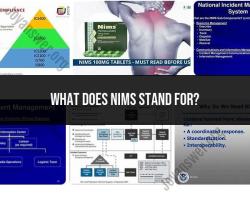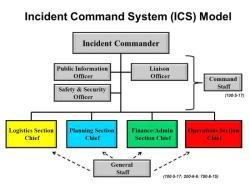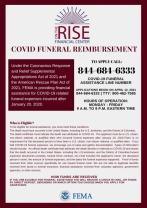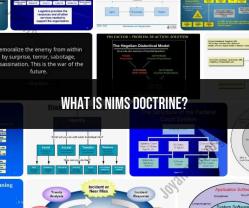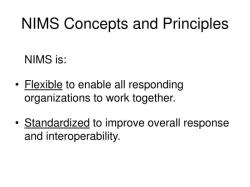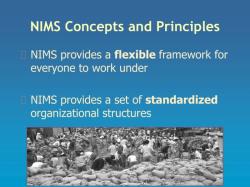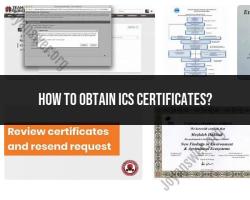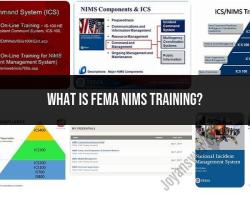What is National Response Framework FEMA?
The National Response Framework (NRF) is a guide developed by the Federal Emergency Management Agency (FEMA) that outlines how the United States responds to all types of disasters and emergencies. The NRF provides a comprehensive, coordinated, and systematic approach to the federal government's role in supporting state, local, tribal, and territorial response efforts.
Key components of the National Response Framework include:
Emergency Support Functions (ESFs):
- The NRF organizes federal assistance into 15 ESFs, each led by a specific federal agency or department. These ESFs cover various aspects of response, such as transportation, communications, public health, and logistics.
Core Capabilities:
- The NRF identifies 32 core capabilities that are essential for responding to disasters and emergencies. These capabilities are grouped into five mission areas: Prevention, Protection, Mitigation, Response, and Recovery.
Incident Command System (ICS):
- The NRF emphasizes the use of the Incident Command System, a standardized management system designed to coordinate and integrate the efforts of various agencies involved in responding to incidents.
State and Local Role:
- The NRF recognizes the principle that disasters are typically managed at the state and local levels. State and local governments are the first responders and play a primary role in managing incidents within their jurisdictions.
Whole Community Approach:
- The NRF emphasizes a "Whole Community" approach, recognizing that effective response requires the involvement of all levels of government, the private sector, non-profit organizations, and the public. Collaboration and coordination among these entities are essential.
Preparedness and Planning:
- The NRF emphasizes the importance of preparedness activities and planning to enhance the nation's ability to respond effectively to disasters. This includes developing and exercising response plans at all levels of government.
Resource Management:
- The NRF establishes a framework for managing resources effectively and efficiently during incidents. This includes the allocation and deployment of personnel, equipment, and supplies.
Cross-Cutting Priorities:
- The NRF addresses cross-cutting priorities, including the protection of life and property, ensuring the safety and well-being of responders, and promoting the protection of civil liberties.
Adaptive Response:
- The NRF recognizes that incidents vary in scale, complexity, and impact. It provides a flexible and scalable framework that can be adapted to respond to a wide range of incidents, from localized events to catastrophic disasters.
Integration with Other Plans:
- The NRF is designed to integrate with other national-level plans, including the National Prevention Framework, National Protection Framework, National Mitigation Framework, and National Disaster Recovery Framework.
The National Response Framework is a key component of the broader National Preparedness System, which aims to build a secure and resilient nation capable of effectively responding to and recovering from all hazards. The NRF is regularly updated to reflect changes in policy, lessons learned from exercises and real-world incidents, and the evolving nature of threats and hazards.
The National Response Framework: FEMA's Blueprint for Disaster Response
1. What is the National Response Framework (NRF)?
The NRF is a guiding document developed by FEMA to outline the nation's comprehensive, all-hazards approach to domestic incident response. It provides a standardized framework for all response partners – federal, state, local, tribal, and private sector – to coordinate and collaborate effectively in managing incidents of all types and scales, from small local emergencies to large-scale disasters.
2. Guiding FEMA's Response Efforts:
The NRF serves as a roadmap for FEMA's disaster response activities by:
- Establishing shared responsibilities and roles: It clearly defines the roles and responsibilities of all response partners at different levels to ensure a unified and coordinated response.
- Promoting interagency collaboration: It promotes seamless cooperation between different government agencies and departments involved in disaster response.
- Facilitating resource allocation: It guides the allocation of federal resources to support state and local response efforts effectively.
- Enhancing preparedness and planning: It encourages comprehensive preparedness and planning across all levels of government and sectors.
3. Key Components and Principles:
The NRF is built on several key components and principles:
- Scalability and flexibility: The framework can be adapted to incidents of varying sizes and complexities.
- Unity of effort: It emphasizes the importance of all response partners working together towards a common goal.
- Public safety and well-being: The primary focus is on the safety and well-being of affected individuals and communities.
- Risk-based approach: The framework prioritizes mitigation and preparedness based on risk assessment.
- Continual improvement: The NRF undergoes regular updates and revisions to reflect lessons learned and emerging best practices.
4. Implementation in Emergency Management:
The NRF is implemented through a variety of mechanisms, including:
- State and local emergency plans: Local emergency plans are aligned with the NRF to ensure consistency and interoperability.
- Training and exercises: Emergency response personnel are trained on the NRF to ensure they understand their roles and responsibilities.
- Emergency Support Functions (ESFs): These federal teams coordinate specific response activities to support state and local efforts.
- Interagency coordination mechanisms: Established channels facilitate communication and collaboration between different response partners.
5. FEMA and the National Response Framework:
FEMA plays a central role in the NRF:
- Developing and maintaining the framework: FEMA leads the development and continuous improvement of the NRF.
- Providing training and technical assistance: FEMA assists state and local partners in implementing the NRF through training and technical assistance programs.
- Coordinating federal response efforts: FEMA coordinates the deployment of federal resources and support to states and localities during large-scale disasters.
The National Response Framework serves as a critical tool for ensuring coordinated and effective disaster response across all levels and sectors. By understanding its key components and principles, we can better prepare for and respond to any type of emergency, working together to protect lives and communities.


